As I mentioned in my knitted cover button post, I got into some online research on DIY cover buttons, and I couldn’t resist making up a couple of sewn ones. Special thanks to Sophie of Ada Spragg for pointing me towards Ebony H’s tutorial for fabric covered buttons on SewStylist! I love the idea of covering existing buttons, and especially that you can sew through them. But, I’m kind of a purist, I like things clean, and held together with needle and thread alone. And I had some more ideas … so, below is my version.
If you’d rather use a cover button kit from the fabric store (I do this a lot too), scroll down (way down) towards the bottom of the post, and I’ll include my favorite tips for those as well.
Let’s get started, shall we?
Measuring & planning the button front
Draw around your button with a fine-point marker. It’s easiest to use one that erases with water or air, but if you don’t have that, you can use any regular marker that won’t show through your fabric, just keep all markings on the wrong side of the button. Draw another circle outside the button outline—this is the fabric that will wrap around the button to the back. It should be just a little smaller (about 1/8″ or 3mm smaller) than the thickness of your button plus half its width. If your button is bigger, you can have more of a gap in the fabric at the middle of the back. For these little buttons, I wanted as much fabric on the back as I could get without it bunching up in the middle, so that it has the best chance of staying in place and not fraying as I sew it. Mark the distance you want outside the button outline at several points, then connect them to make an outer circle. (This picture also shows the markings for the back piece, which we’ll get to later.)
Embroidery (optional of course)
If you’d like to add any embellishments, it’s easier to work them before you cut out the fabric pieces. I was inspired by this post on The Purl Bee, but decided I’d rather have simple stitching. I think this would look great if you used the same thread as the topstitching on your project.
Since I used a water-erasable pen, I could stitch on the same side as the marks, following the button outline.
Once I was done with my embroidery, I caught the thread ends in the stitching on the wrong side, and trimmed them off.
Sew & gather the button front
Cut out your fabric circle. Then sew a line of running stitches around the edge, around 1/8″ or 3mm inside the cut edge. Ordinarily I’d use matching thread for this, but as you’ll see, it won’t show, so use contrasting if it’s easier to see. Start with a knot, or leave a long tail so you can pull on both ends of the thread when you’re done. The smaller you make the stitches, the easier it will be to pull your gathers in tight.
Time to pull the gathers around your button. At this point it occurred to me that I needed to get the button wet at some point to erase the marker, and it might be easier to manipulate the gathers if the fabric was damp. It totally was! So I highly recommend spritzing your fabric with a little water before you cinch it around the button. This should work for all natural fibers.
Pull the gathers in tight. Use your thumbnail or an awl, etc. to redistribute any gathers that are bunching up.
Once the gathers are set how you’d like them, stitch around the back, a bit inside the edge, with a series of backstitches to hold them in place.
The button back
I wanted another fabric piece to cover all these raw edges on the back. To make one, draw around your button again, but this time just add a tiny bit around the edge, I found 2 mm to be just about perfect (I know you have a metric ruler, fellow Americans).
Stitch another circle of running stitches, this time just inside the line you drew around the button. Leave a tail of thread at the beginning and the end.
Pull on both the thread tails to gather the raw edge to the inside. It may help to get the fabric wet again. You can use the blunt end of a needle to push out any parts of the turned-in edge that get bunchy. This doesn’t have to end up as a perfect circle, since it will be on the back, but roundish is helpful.
Once the back looks pretty good, I like to tie the thread ends in a knot, so the fabric won’t come ungathered as I sew it on.
You can guess what to do now, right? Yep, sew the back piece in place, using tiny stitches around the edge.
Finish off with a couple of backstiches under the edge.
That’s it! I sewed them on using my favorite method, making a thread shank on the back. You could also sew just through the fabric on the back of the button, rather than through the original button holes, but I think this would leave the fabric on top of the button free to shift around a bit.
The possibilities here are endless … and speaking of endless possibilities:
Tips for store-bought cover button kits
I use these a lot (at least I did before I discovered the above technique). My favorite are the tiny ones (surprise). Here are my best tips:
1. Get the kind with the teeth facing inwards, not the ones with the flat metal edge. The teeth are a lot easier to work with, and you can use them without tools, precisely centering your fabric. The flat edge also cuts through the fabric over time, meaning your buttons wear out faster.
 Ones on either side, good, the center ones, not so much. Her hair! Can you tell I inherited cover button kits from both my grandmothers?
Ones on either side, good, the center ones, not so much. Her hair! Can you tell I inherited cover button kits from both my grandmothers?
2. Use another layer of fabric, or something thin and opaque like interfacing, under your button fabric. This prevents the shiny button from showing through, and gives your button a subtle but nice plusher look. The extra piece only needs to be the size of the button top, since it doesn’t need to wrap around.
 I replace the fabric on a couple of these buttons on my coat about once a season. The ones with a layer of interfacing do seem to last longer.
I replace the fabric on a couple of these buttons on my coat about once a season. The ones with a layer of interfacing do seem to last longer.
3. The guides printed on the back of the button kit are probably too big for thick fabric and/or knits. You need enough fabric to secure in the teeth, but not so much that it bunches up and keeps the back from seating in securely. You may need to experiment to find the right size circle for your fabric.
4. Pull the fabric up from two opposite sides, and hook it onto the teeth by pressing it under them. Repeat at right angles to your first two points, and then do the places in between.
5. For knits, it’s up to you how much you stretch the fabric as you pull it over the button. Pulling less will make the buttons look more plush. Try to be consistent, however you like it.
6. It’s totally possible to use the metal parts of these kits many times when the fabric wears out (like on my coat). Use any small flat tool to pop off the back, then pull off the remains of the fabric, and start again.
7. You could definitely use embroidery on these as well (they do in that Purl Bee tutorial), just be careful when centering the fabric—see 4. You could even use the embroidery to tack your two layers together.
I think that’s the lot, for now anyway. Best returns of the season, everyone!

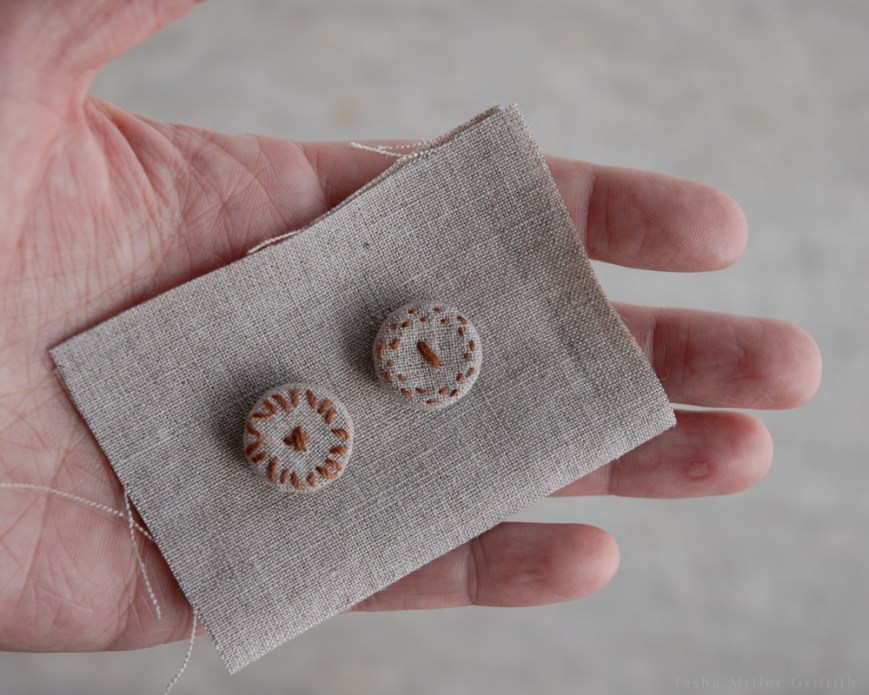

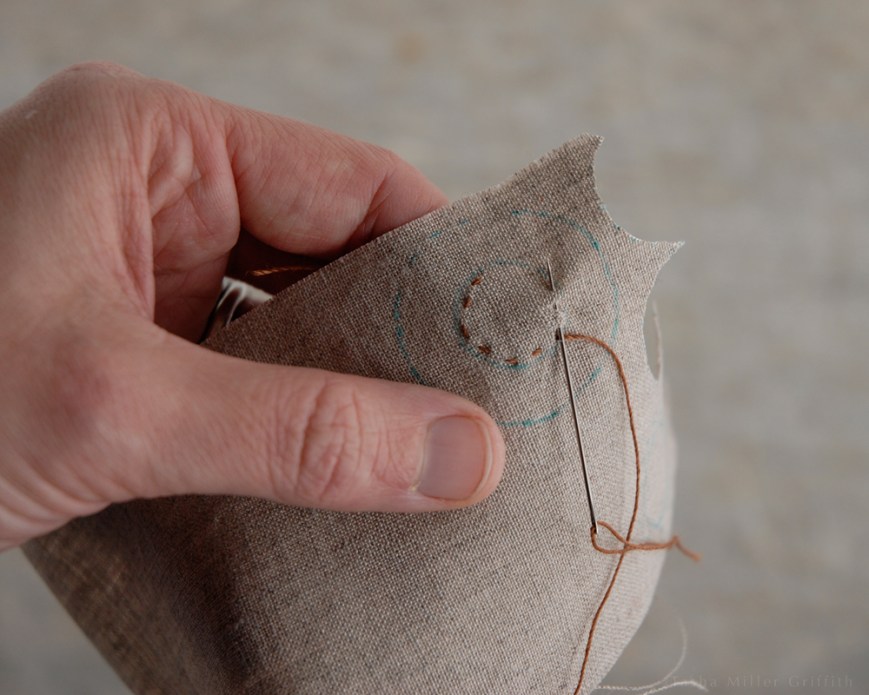

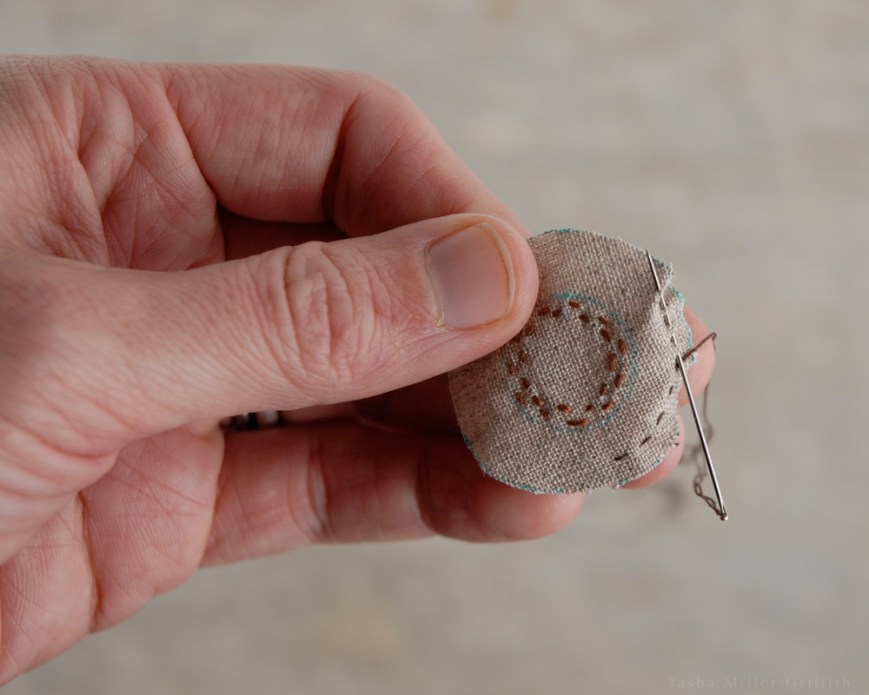
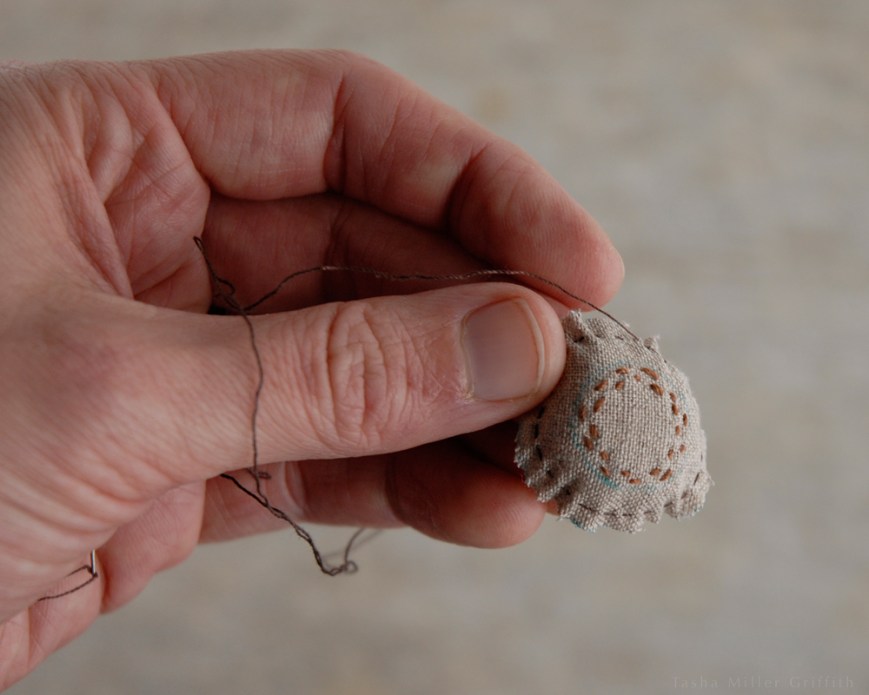

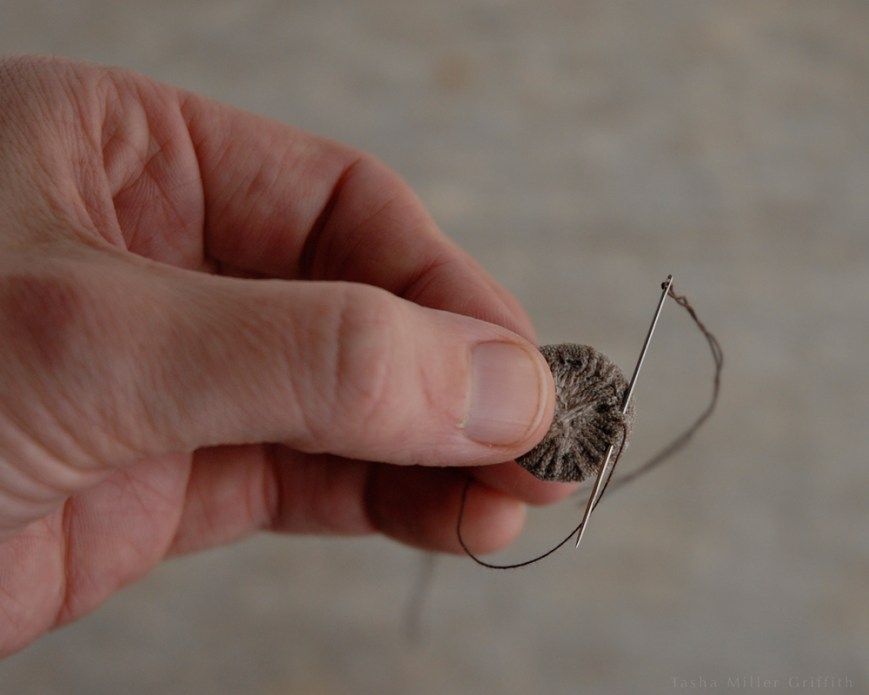

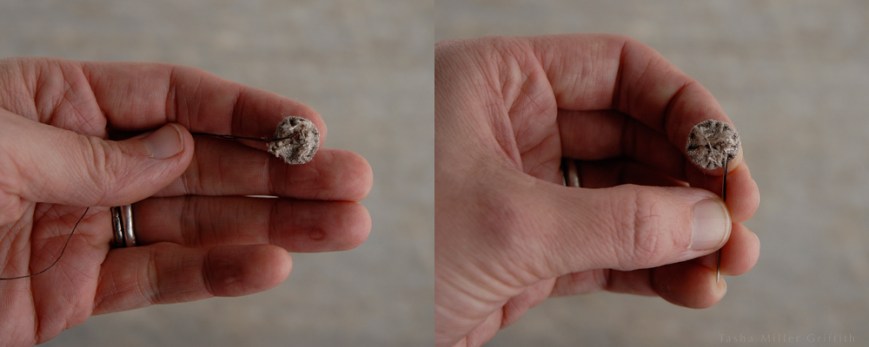
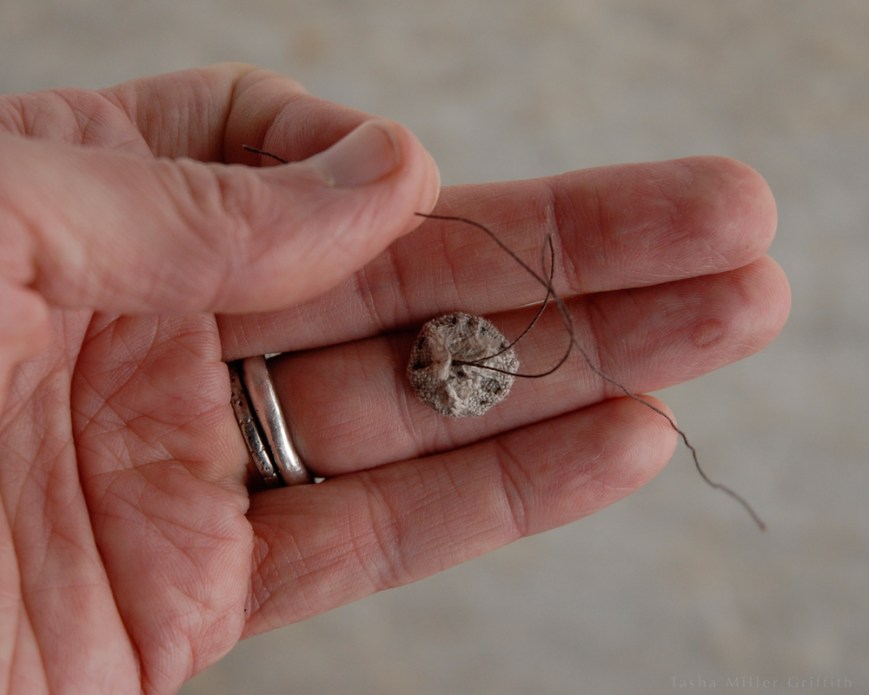

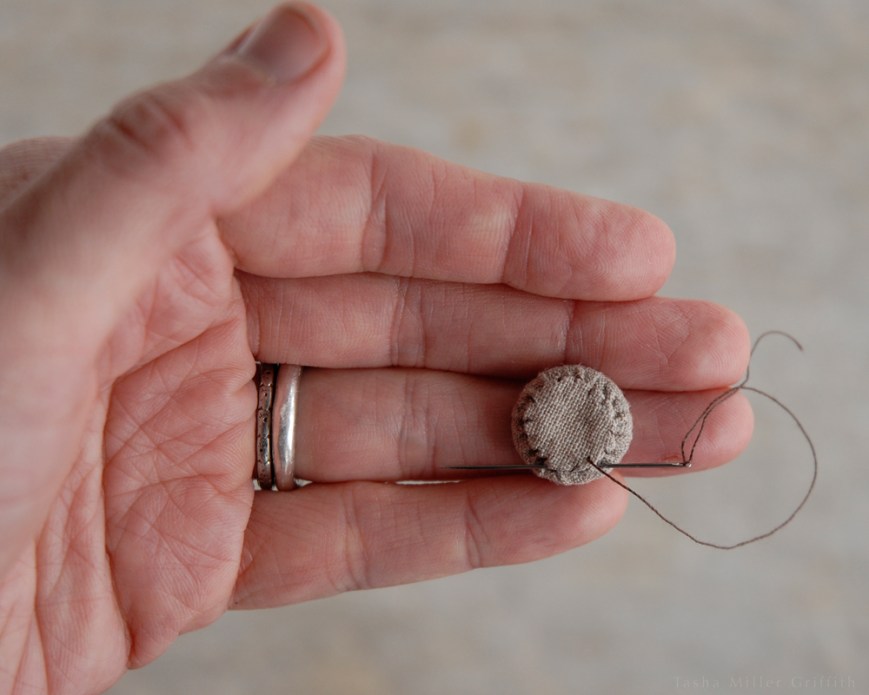
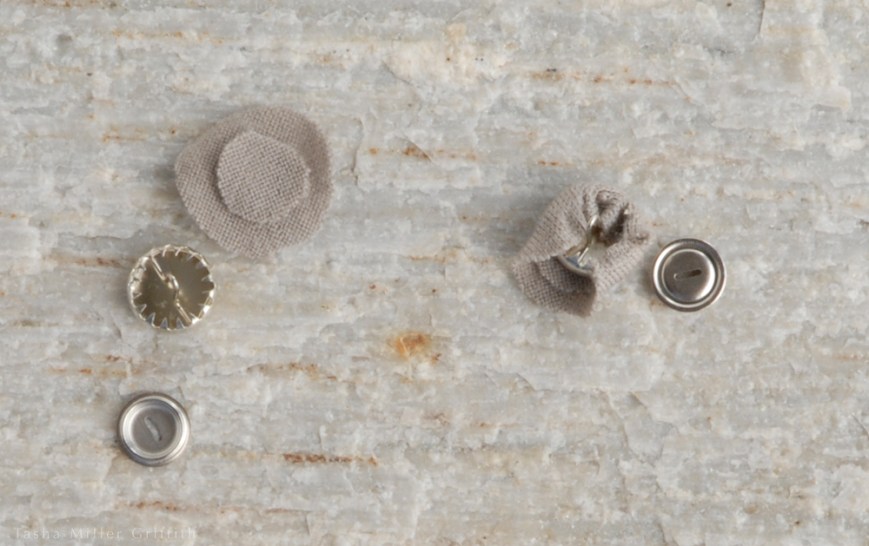

Hey! Really enjoying your posts!!! You’re on fire!! Happy solstice merry Christmas and here’s to a fab 2015!!! xoxo
And I didn’t get into Scottsdale for 2015—wtf?! 🙂 Sent from my iPhone
>
Hey thanks! I was just thinking about you. I’m bummed we won’t see you at Scottsdale! But all the best wishes for you in 2015 as well!
Wow! thank you so much for the detailed explanation. Just a question, please do you know how I could add a metal rim/edge to a fabric covered button? Like the one in this picture http://i00.i.aliimg.com/photo/v0/1587257904/black_fabric_covered_button_metal_fabric_covered.jpg_220x220.jpg
Thanks!
Hmm, I’m not coming up with any ideas really, unless you found a button like that you could take apart and add new fabric, or a piece of metal hardware that fit exactly around your button. It seems like it would be hard to make the metal rims yourself …